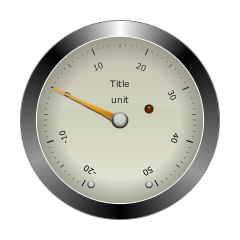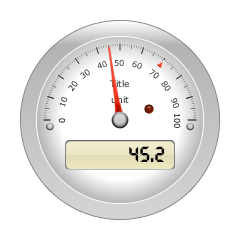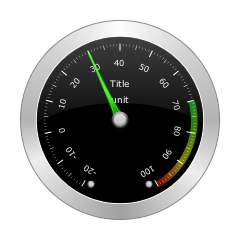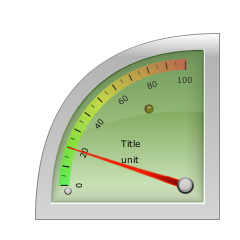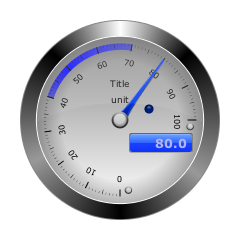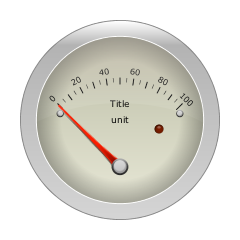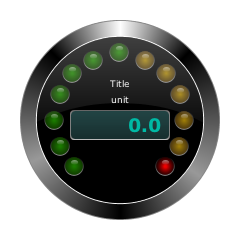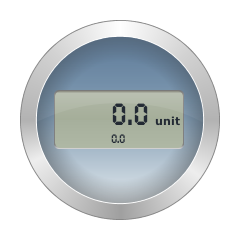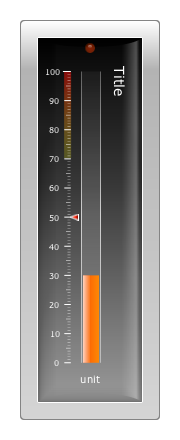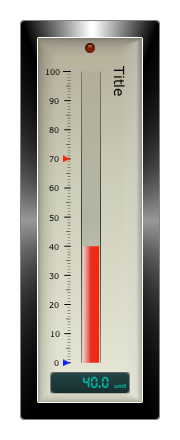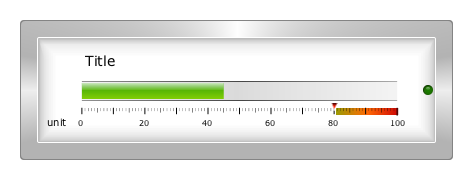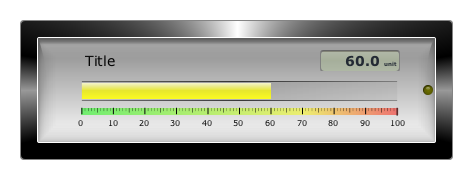jRTF is a simple library to generate RTF documents and to fill RTF template files. The syntax is compact and non-verbose which makes it to some kind of DSL for RTF documents. Its under the BSD license.
The Basics
Write a simple RTF document to a file:
Rtf.rtf().p( "Hello World" ).out( new FileWriter("out.rtf") );
Special RTF-characters like "{", "}", "\" are encoded automatically. "\t" will stay tab and "\n" will be converted to a new paragraph.
The static document() creates a new RTF document object and the p() method is short for "paragraph". The out() method finally writes the output to an Appendable (a Writer for example) and out() without arguments or toString() returns the RTF document as String. The p()method is quite flexible because you add as many parameters as you like. If during building or writing of the file some exceptions will occur they are all of type RtfException which itself is a RuntimeException. So I/O errors during writing will be wrapped in this RtfException.
Because jRTF makes heavy use of statics methods the programs can be very concise and compact with static imports. Let’s assume the following (static) imports for the next examples:
import static com.tutego.jrtf.Rtf.rtf;
import static com.tutego.jrtf.RtfDocfmt.*;
import static com.tutego.jrtf.RtfHeader.*;
import static com.tutego.jrtf.RtfInfo.*;
import static com.tutego.jrtf.RtfFields.*;
import static com.tutego.jrtf.RtfPara.*;
import static com.tutego.jrtf.RtfSectionFormatAndHeaderFooter.*;
import static com.tutego.jrtf.RtfText.*;
import static com.tutego.jrtf.RtfUnit.*;
A RTF document consists of paragraphs which itself are collected in sections. A section is some kind of mini document with own header, footer, margins, columns. Most documents consist of only one section.
The p() method of the Rtf class is just a façade for the following
rtf().section( p( "Hello World" ) ).out( new FileWriter("out.rtf") );
If there will be more sections they are accumulated this way:
rtf().section(xx).section(xx).section(xx).out(xx);
The following RTF document consists of several paragraphs and text formattings:
rtf().section(
p( "first paragraph" ),
p( tab(),
"second par",
bold( "with something in bold" ),
text( "and" ),
italic( underline( "italic underline" ) )
)
).out( out );
The declaration of the section method is:
- Rtf section(RtfPara... paragraphs)
For building paragraphs the RtfPara class offers two useful static methods: p(RtfText...) and a convenience method p(Object...). So you either build a paragraph with a collection of RtfText objects or you pass a sequence of objects which will be converted to Strings (if the type is not already RtfText). null elements in the sequence will be ignored.
A String can be wrapped in a RtfText object via the static method text(String) of the RtfText class. There is also the vararg methodtext(Object...) with is the foundation for p(Object...).
Beside of using ordinary text there are a couple of special methods like tab(), bullet(), currentDateAbbreviated(), shortHyphen() and more.
A footnote (rtf() omitted for brevity):
p( text("Read this book"),
footnote( "The joy of RTF" ),
text(".") )
Using a field requires two text blocks: One for the format description and one for a value a reader can show (most recent calculated result of the field).
field( p("time \\@ \"dd.MM.yyyy\""),
p("20.06.2010") )
Because there are so many different fields and time is a common case there is an extra class RtfFields with static utility methods. Insert a time field with a pattern like this: timeField("hh:mm:ss"). Or the number of pages for a header:
p( pageNumberField(), "von", sectionPagesField() )
Pictures are part of a paragraph. The source is given by an URL or InputStream. If the resource is not available a RtfException will be thrown during writing.
p( picture( getClass().getResource( "folder.png" ) )
.size( 64, 64, PIXEL )
.type( AUTOMATIC )
)
You can explicitly set the picture type to PNG or JPEG, but usually PictureType.AUTOMATIC will do the job.
It you want a paragraph with bullets at the beginning use ul() instead of p():
section(
p( "first paragraph" ),
ul( "bullet1"),
ul( "bullet2"),
p( "another paragraph" )
)
The p() methods return an RtfTextPara object which allows formatting the paragraph according to the builder pattern. Aligning a paragraph is done this way;
p( text("centered and indented") ).alignCentered().indentFirstLine( 0.25, RtfUnit.CM )
RtfUnit is an enum. RTF uses a quite unique measurement (twips) but with the enum there is no need to know anything about twips.
If you want to use tabs do this:
p( "1\t2\t3" ).tab( 3, CM )
.tab( TabKind.CENTER, TabLead.DOTS, 9, CM )
Additional to p() there is a method pard() where the paragraph styles are not inherited to the following paragraph.
Tables are a bit tricky in RTF because there isn’t a concept of a table but just the concept of a row. In total a section can contain two different types of blocks: paragraphs and rows. While p() lets you insert a regular paragraph the method row() lets you insert a row.
p( "lala" ),
row( "Number", "Square" ),
row( 1, 1 ),
row( 2, 4 ),
p( "lulu" )
While the result type of p() is RtfTextPara the result type of row() is RtfRow. With RtfRow you style the hole row in a similar way you style the paragraph.
row(
bold( "S" ), bold( "T" )
).bottomCellBorder().topCellBorder().cellSpace( 1, CM ),
row(
"Good", "nice"
). cellSpace( 1, CM )
In order to use different fonts and colors a header has to precede the section:
rtf()
.header(
color( 0xff, 0, 0 ).at( 0 ),
color( 0, 0xff, 0 ).at( 1 ),
color( 0, 0, 0xff ).at( 2 ),
font( "Calibri" ).at( 0 ) )
.section(
p( font( 1, "Second paragraph" ) ),
p( color( 1, "green" ) )
)
).out( out );
This header is setting 3 colors and one font. Every color and font is identified by an index. This index is used later to identify this color and font. The numbering starts with 0. If there is no font given, Times will be the default font at position 0.
Some formats and styles are bound to a section, like a header. Let’s set a header for all pages in that section:
section(
headerOnAllPages(
p( "Date:", currentDate() )
),
p( "bla bla bla " )
)
A RTF document can have some associated meta data: in a header, info or document info block. You can set this on the rtf() object:
rtf()
.info( author("christian"), title("without parental guidance") )
.documentFormatting( defaultTab( 1, CM ),
revisionMarking() )
.section("")
.out( out );
jRTF is not able to read and change existing RTF documents (also I encourage programmers to extend jRTF) but you can inject RtfTExt in slots. To do so prepare a RTF document and define "variables" with are framed in %%. If for example an address has to be written in in the RTF document put a definition like
%%ADDRESSLINE1%%
in the regular text. (Take care not to change the formattings in between. If jRTF is not substituting your variable open the RTF file and check if the variable is really in the format %%VARIABBLE%%.)
To substitute use the following jRTF API:
Rtf.template( new FileInputStream("template.rtf) )
.inject( "ADDRESSLINE1", "tutego" )
.inject( "ADDRESSLINE2", bold("Sonsbeck") )
.out( FileOutputStream("out.rtf") );
The key is always of type String but the value argument for inject() goes to RtfText.text(Object). That means regular Strings or formatted RTF text is both fine.
Several facts drove the design of jRTF.
- The main design of the API was driven by ease of use. Take a paragraph and text for example. They are represented by the classes RtfPara andRtfText. But most methods are overloaded and as an alternative to RtfPara/RtfText they simply accept a regular String for the common usage or even an sequence of objects with are gracefully converted.
- jRTF is able to run on the Google App Engine because classes like Color, Font, FileWriter and other black-listed classes aren’t used.
- It should not be possible to generate illegal RTF and the library should throw exceptions if strange things happen. (It could do better…)
- You will find three kinds of API styles
- Hierarchical style
- Varargs container style.
- Fluent interface style.
The document model of jRTF is strictly hierarchical. A header just can be add to the document but not to a text. A paragraph can just be part of a document but not part of a header, etc.
If more then one element has to be added to some kind of container varargs are preferred and no Collection classes, which are usually used in Java. E.g.: A section can contain several paragraphs, a paragraph several text parts,a document different headers, etc.
The fluent interface design has been usually chosen when an object can have different states: A paragraph can be aligned and centered, a font definition for the header can be set to bold and has a certain site, and so on.
When it comes to the method names of the fluent interface the prefix "no" and the postfix "on"/"off" are used. "on/off" is only used as a suffix when two different methods can toggle the status. So it’s "noLineNumbering()" and not "lineNumberingOff()" because you can’t toggle the line numbering back.
- jRTF builds an internal representation of a RTF document first and writes
it later to a stream. Currently jRTF don’t take advantage of that because it could for example accept a font or color definition during writing a text and insert automatically a header information which is written in the second pass.
jRTF is grown out of my own need to generate RTF documents. Some background about this project: http//www.tutego.de/ is a German training institute and we wanted to send a RTF in revision mode to every trainer on a regular basis with his contact details, availability and a table with his seminars. The jRTF template mechanism is used to prepare offers if a customers asks for a training. Later I added things because they were just easy to add: pictures, different formating (but does somebody double underline today?) So for me jRTF does the job and probably I will not add a lot more stuff until I need it.
So a lot of things are missing like nice table handling, bookmarks, comments/annotations, drawing objects, sub documents, all object/shape stuff, embedded fonts, GIF images, and a lot more. The current RTF 1.7 standard has too many control words (around 1400). Some of them are easy to add, some conceptual things are a little bit more work. If you are looking to a mature open source alternative take a look at iText RTF (http://itextrtf.sourceforge.net/).
You can help with
- testing jRTF
- finding out where jRTF generates wrong RTF and where exceptions should be thrown
- adding more control words to jRTF to support more formattings/styles
- add more field
- uncomment the style support and make it work
- make the table stuff work, introduce a RtfCell class
- add GIF and WMF support
- Builds an enum for different languages so that the hole document, a certain paragraph or text can be in different languages
- abstract from font, style and color positions in header and introduce names, which are mapped to these positions
Furthermore some design decisions has to be made according to formattings: The problem now is that some formattings can appear at several places. Take paragraph formattings for example. They can appear in header definitions and also "local" with the paragraph itself. I started using a EnumSet for this formattings which have the big advantage that a format can be reused and building is quite nice. But for consistency with the other classes I changes to the builder style which has the disadvantage of heavy source duplication and the lack of reusing a certain style. This problem can be solved in three different ways:
- Continue with the builder style and bring people to using styles so that local paragraph formattings are not necessary.
- Offer either a builder style and a EnumSet style.
- Change to EnumSet and accept that there a two different API "styles".

